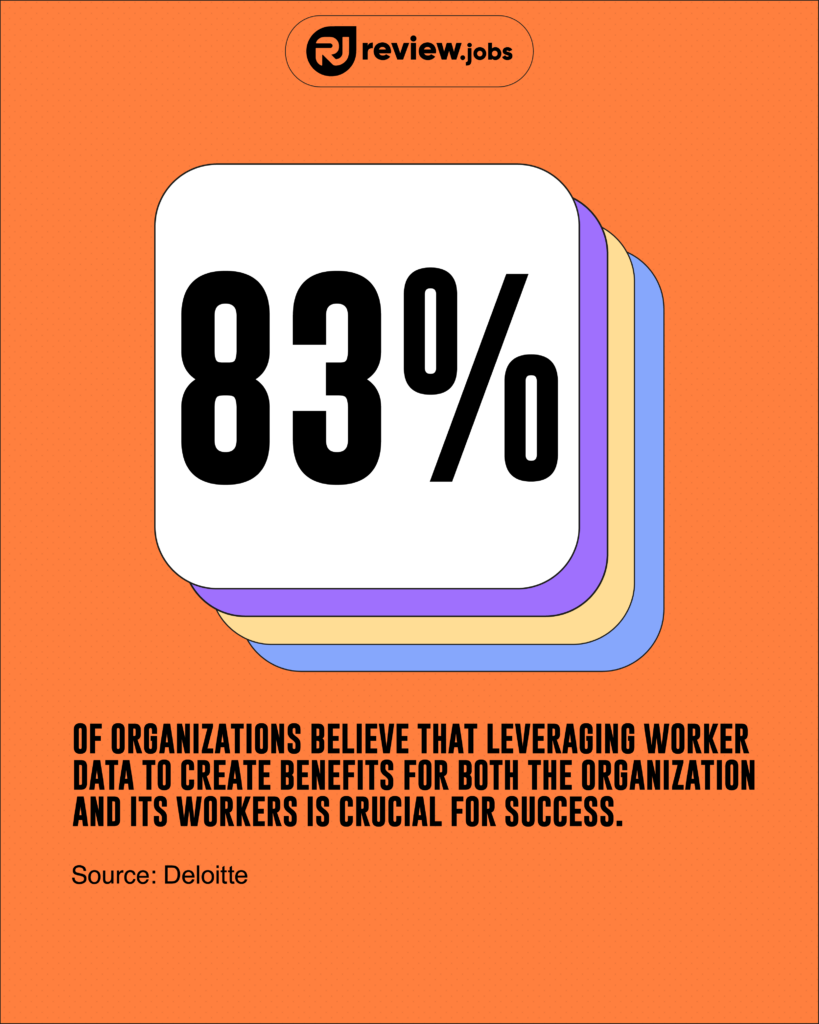Takeaways
Strategic workforce planning is a vital process that allows organizations to align their talent strategies with their business objectives. By integrating SWP into their overall business strategy, companies can optimize costs, enhance operational efficiency, and build a resilient workforce capable of adapting to changing market conditions. Operations managers play a crucial role in this process, ensuring that the workforce remains flexible and capable of meeting future demands.
Key takeaways from this article include:
- The importance of aligning workforce strategies with long-term business goals.
- The need for data-driven approaches to analyze workforce needs and forecast future requirements.
- The role of scenario planning and gap analysis in preparing for potential changes.
- Best practices such as engaging stakeholders, leveraging technology, and integrating diversity initiatives to enhance workforce planning.
Table of Content
- What is Strategic Workforce Planning?
- Key Goals and Benefits of Strategic Workforce Planning
- Core Components of Strategic Workforce Planning
- Best Practices for Effective Strategic Workforce Planning
- Popular Models and Frameworks for Strategic Workforce Planning
- Implementation Strategies for SWP
- Challenges in Strategic Workforce Planning
- Examples and Case Studies
Strategic workforce planning is fundamental for operations managers and directors who strive to align their teams with long-term business goals. In a competitive and dynamic market, businesses must ensure they have the right people, with the right skills, in the right places, and at the right time. This is where strategic workforce planning (SWP) comes into play, offering a structured approach to analyze and manage workforce needs efficiently.
At its essence, SWP involves forecasting and managing human resources to align with organizational objectives. By understanding the current workforce and anticipating future requirements, companies can maintain agility and resilience in the face of economic shifts, technological advancements, and evolving business strategies. This article serves as a comprehensive guide, exploring the components, benefits, and best practices for SWP, ensuring businesses maximize their human capital.
What is Strategic Workforce Planning?
Strategic workforce planning is the systematic process that aligns an organization’s human resources with its strategic goals. It encompasses assessing current workforce capabilities, forecasting future needs, and developing plans to address gaps. The ultimate aim is to have a workforce that is agile and capable of meeting both current and future business demands.
The term “strategic workforce planning” can be broken down into three parts:
- Strategic refers to the alignment with long-term business goals, ensuring that workforce planning is not reactive but proactive and integrated with broader organizational strategies.
- Workforce signifies the organization’s human capital—the collective skills, experience, and capabilities of employees.
- Planning involves analyzing, forecasting, and managing these resources to ensure the business is equipped for future demands.
Incorporating these elements, SWP becomes a critical management function for operations managers who need to balance their teams’ skill sets, sizes, and costs while aligning with organizational objectives.
Importance of Strategic Workforce Planning
The importance of SWP lies in its ability to build and maintain an agile workforce that adapts quickly to changes, whether they stem from market fluctuations, technological innovations, or evolving business goals. SWP ensures that operations managers can optimize resources, control labor costs, and anticipate talent shortages, preventing disruptions that could hinder business performance. By having a proactive plan, organizations avoid the pitfalls of skill shortages or excess labor, enhancing both efficiency and competitiveness.
Core Objectives of SWP
Strategic workforce planning has several objectives that are essential for organizational success:
- Maintaining the right size and skill balance to meet business demands efficiently.
- Anticipating and preparing for future changes, ensuring that recruitment and training efforts are aligned with long-term goals.
- Aligning workforce efforts with broader organizational strategies, allowing businesses to adapt quickly and remain resilient in uncertain times.
Key Goals and Benefits of Strategic Workforce Planning
The primary goal of strategic workforce planning is to ensure an organization has the right people, with the right skills, at the right time, place, and cost. This comprehensive approach enables businesses to thrive even in unpredictable environments.
Goals of SWP
Strategic workforce planning aims to achieve several key goals:
- Right People: Ensuring the organization has employees who align with its culture, values, and strategic needs.
- Right Skills: Maintaining a workforce with the necessary skills, experience, and knowledge to drive business success.
- Right Size: Balancing employee numbers to optimize productivity and efficiency without excess labor costs.
- Right Time: Aligning talent acquisition and development timelines with the business cycle.
- Right Place: Positioning employees strategically across different locations to maximize operational efficiency.
- Right Cost: Managing labor costs effectively, ensuring financial resources are allocated wisely without compromising talent quality.
Benefits of SWP
Strategic workforce planning provides a wide array of benefits, crucial for business continuity and growth. Firstly, it aligns workforce strategy with business goals, ensuring that every hiring, training, or deployment decision contributes to the organization’s strategic direction. This alignment minimizes the risk of misallocated resources and optimizes labor costs.
Secondly, SWP supports risk management by identifying potential skill gaps early on, allowing businesses to address shortages or surpluses proactively. This proactive stance enhances organizational agility, enabling companies to respond swiftly to market changes or technological disruptions without compromising performance.
Another significant benefit is improved employee retention. By aligning workforce strategies with employee career development and needs, businesses can increase employee satisfaction, reducing turnover rates and fostering loyalty. Additionally, SWP promotes diversity and inclusion, creating a more innovative and adaptive work environment that supports organizational growth.
Core Components of Strategic Workforce Planning
To build an effective strategic workforce plan, organizations must integrate several core components that facilitate the development of a robust and adaptable workforce.
Workforce Analysis
Workforce analysis is the starting point for any SWP initiative. This involves assessing the current workforce composition, including skills, demographics, and performance levels. Operations managers need to understand the existing talent pool thoroughly, identifying strengths, gaps, and areas for improvement. This analysis serves as the foundation for future planning efforts, enabling organizations to create targeted strategies for recruitment, training, and succession planning.
Forecasting Future Needs
Accurately predicting future workforce needs is crucial for effective SWP. This requires analyzing market trends, technological advancements, and business projections. Using data analytics, companies can forecast talent demand and anticipate demographic shifts that may affect their workforce composition. Forecasting helps operations managers develop proactive strategies to address these needs, ensuring the organization is ready to meet future challenges.
Scenario Planning
Scenario planning involves creating multiple potential future scenarios based on market conditions, technological advancements, or regulatory changes. By developing these scenarios, businesses can prepare for various possible outcomes, ensuring they remain resilient regardless of external influences. Scenario planning helps organizations identify contingency measures and develop adaptation strategies, securing business continuity.
Gap Analysis
Gap analysis is a critical component of SWP, focusing on identifying skill and role shortages within the organization. By comparing the current workforce’s capabilities with future requirements, operations managers can pinpoint skills gaps and develop strategies to bridge these gaps through recruitment, training, or internal mobility programs. Effective gap analysis ensures that the business remains well-equipped to handle future demands.
Developing Workforce Strategies
Once gaps and needs are identified, it’s essential to develop strategies that fill these gaps. This may involve recruitment efforts targeting specific skills, reskilling programs for current employees, or leveraging external talent through outsourcing. Succession planning also plays a significant role, in ensuring the organization is prepared for leadership changes and other critical role requirements.
With skills gaps becoming increasingly prominent, 68% of companies are now investing in reskilling gaps and enhance workforce capabilities.
Source: SHRM
Implementation and Monitoring
Executing the workforce plan requires a detailed action plan that outlines specific steps, timelines, and resources. Monitoring progress is equally important; tracking key performance metrics like employee turnover rates, productivity levels, and skill development ensures that the plan remains effective. Regular evaluations and adjustments help align the SWP with the evolving business strategy, maintaining organizational agility.
Best Practices for Effective Strategic Workforce Planning
To ensure the success of a strategic workforce plan, several best practices should be considered.
Involve Key Stakeholders
Successful SWP requires collaboration across different levels of the organization. Engaging senior management, HR leaders, and department heads ensures that the workforce plan aligns with the company’s strategic goals and receives the necessary support. Operations managers must facilitate cross-departmental communication to build consensus and drive action.
Leverage Data and Technology
Modern SWP relies heavily on data analytics and technology to provide insights into workforce dynamics. Utilizing HR dashboards, workforce monitoring tools, and employee data enables organizations to make data-driven decisions. Technology facilitates real-time tracking of workforce performance, helping operations managers adjust strategies based on current and projected data.

83% of organizations believe that leveraging worker data to create benefits for both the organization and its workers is crucial for success. However, only 19% feel fully prepared to utilize this data effectively.
Source: Deloitte
Integrate Succession Planning
Preparing for leadership changes is vital for long-term stability. By integrating succession planning into SWP, businesses ensure that critical roles have identified successors, minimizing disruptions during transitions. Developing leadership programs and offering growth opportunities to high-potential employees are essential steps for building a resilient and capable workforce.
Continuously Monitor and Adapt
Strategic workforce planning is not a one-time task but an ongoing process. Regular evaluations of workforce performance and business needs are crucial for maintaining alignment with organizational goals. Operations managers must adopt a flexible approach, revisiting and adapting the SWP as internal or external conditions change.
Implementation Strategies for SWP
Talent Acquisition
An effective talent acquisition strategy is essential for filling critical skills gaps and preparing for future business demands. Proactive recruitment efforts, supported by workforce forecasting, help operations managers anticipate talent needs based on market conditions and business growth plans. This proactive approach ensures that businesses attract and retain the talent needed to sustain and grow their operations.
Employee Development and Training
Fostering a culture of continuous learning is crucial for developing a future-ready workforce. Employee development programs, including reskilling and upskilling, align employee capabilities with technological changes and business needs. Leadership development programs are also essential for building a robust talent pipeline, ensuring that future leaders are prepared to take on critical roles as the organization grows and evolves. By investing in employee development, businesses not only fill current skills gaps but also build a culture that supports career growth and long-term engagement.
Contingent Staffing and Outsourcing
Contingent staffing and outsourcing are practical strategies for managing short-term or specialized workforce needs without committing to long-term employment contracts. Operations managers can use temporary or contract workers to fill critical gaps during peak periods or for specific projects that require specialized skills. Outsourcing non-core functions to third-party vendors is another way to optimize workforce efficiency, allowing organizations to focus on strategic priorities. It’s essential, however, to ensure that outsourced functions align with company standards and maintain quality.
Diversity and Inclusion Programs
Incorporating diversity and inclusion initiatives into the strategic workforce plan is not only a matter of compliance but also a business advantage. Diverse teams bring varied perspectives, enhancing innovation and problem-solving capabilities. Operations managers must create inclusive strategies that attract talent from different backgrounds and experiences, aligning these initiatives with the company’s business goals. This approach not only enhances the company’s reputation but also fosters a culture where creativity and collaboration thrive.
Challenges in Strategic Workforce Planning
Aging Workforce
As the workforce ages, organizations face the challenge of managing transitions as experienced employees retire. Retaining institutional knowledge becomes a priority. This can be done by developing programs for knowledge transfer, where senior employees mentor and train newer staff. Operations managers need to plan for these transitions to ensure continuity in skills and expertise while also integrating new talent who can bring fresh perspectives and energy to the team.
Technological Disruptions
Technology is rapidly evolving, and organizations must stay ahead of these changes to remain competitive. Strategic workforce planning helps businesses anticipate the impact of AI, automation, and other technologies on their workforce needs. For instance, some roles may become obsolete while new ones emerge. SWP enables companies to identify these changes early and develop strategies such as upskilling programs or adjusting their talent acquisition strategies to hire employees with emerging technology skills.
Compliance Issues
Expanding globally or even managing a dispersed workforce within different regions can introduce complexities related to global labor laws and compliance standards. Ensuring that the workforce planning process adheres to various legal requirements is crucial for avoiding penalties and maintaining the company’s reputation. SWP must include scenario planning for regulatory changes and compliance monitoring to address these challenges effectively.
Financial Constraints
Financial limitations can pose significant hurdles to implementing a robust workforce plan. Operations managers often need to balance workforce investments, such as training programs and technology upgrades, with organizational budgets. By optimizing labor costs through effective SWP, businesses can strategically allocate resources without compromising the quality or size of their workforce. Labor cost optimization becomes a key focus, ensuring that the organization maintains a lean but effective workforce that supports long-term growth.
61% of firms with better bottom-line results say that workforce issues drive strategy at the board level, compared to 47% of less profitable firms.
Source: Oxford Economics
Examples and Case Studies
Netflix’s Digital Transformation
Netflix provides an exemplary case of how strategic workforce planning can drive business transformation. When the company transitioned from a DVD rental model to a streaming service, it needed to realign its workforce with new technological and business requirements. Through SWP, Netflix identified the skills needed for its digital transformation, such as software development and content creation, and shifted its talent acquisition strategy to focus on these areas. This proactive approach allowed Netflix to maintain its competitive edge while navigating a rapidly evolving industry.
PwC’s Talent Management Framework
PwC has implemented a data-driven approach to strategic workforce planning, integrating analytics tools to optimize recruitment, training, and talent retention. By analyzing workforce performance data, PwC could identify skills gaps and implement targeted development programs to bridge these gaps. This comprehensive framework ensured that PwC maintained a workforce that aligned with its long-term business goals, demonstrating the effectiveness of a structured and data-centric SWP model.
Global Expansion Initiatives
Companies expanding into international markets often use SWP to navigate the complexities of global talent management and compliance. By forecasting talent needs based on specific market conditions and legal requirements, businesses can develop strategies for hiring, training, and managing a global workforce effectively. This approach ensures that companies not only comply with local regulations but also attract the right talent to support their international growth initiatives.
FAQ
What is strategic workforce planning?
Strategic workforce planning (SWP) is a process that aligns an organization’s human resources with its business goals. It involves analyzing the current workforce, forecasting future needs, and developing strategies to fill gaps, ensuring the company has the right talent at the right time.
Why is strategic workforce planning important?
SWP is essential for businesses aiming to remain agile and competitive. It allows organizations to anticipate future workforce needs, optimize labor costs, and manage talent shortages proactively, enhancing both efficiency and performance.
What are the components of strategic workforce planning?
Key components include workforce analysis, forecasting future needs, scenario planning, gap analysis, and developing strategies for recruitment, training, and succession planning.
How does strategic workforce planning improve employee retention?
SWP helps businesses align their workforce strategies with employee career paths, promoting internal growth opportunities and reducing turnover by fostering an environment where employees can develop and advance.
What tools can be used for strategic workforce planning?
Organizations can use data analytics platforms, HR software, and workforce monitoring tools to gain insights into workforce performance and support decision-making processes.
How can SWP support diversity and inclusion initiatives?
By integrating diversity goals into the workforce plan, companies can attract talent from diverse backgrounds, enhancing creativity and innovation. SWP ensures that diversity efforts align with the company’s overall strategy, fostering a more inclusive workplace culture.





